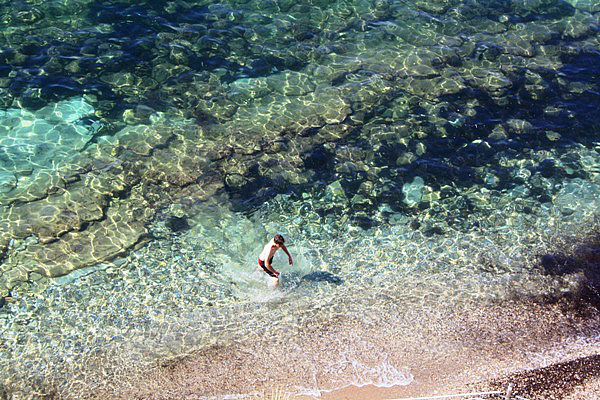
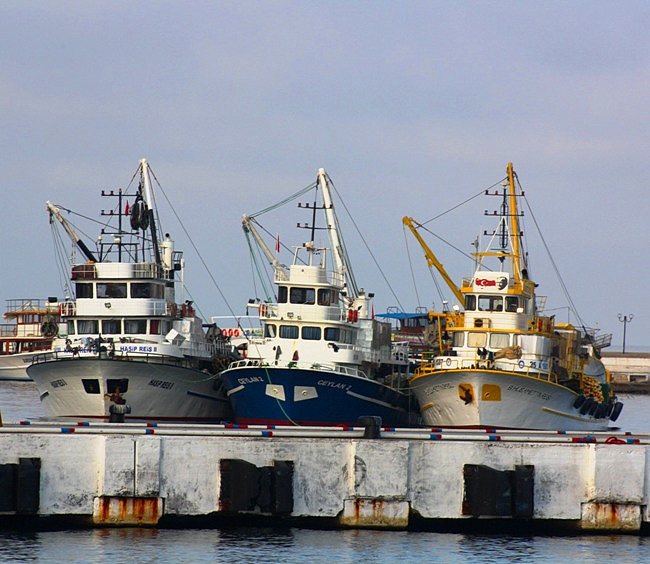
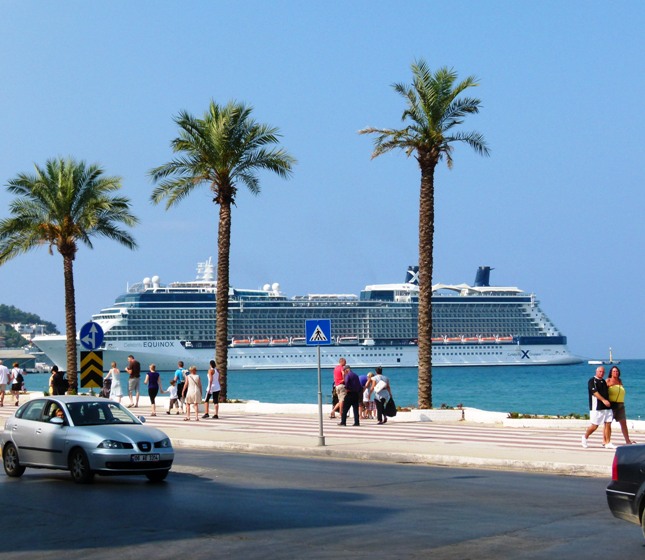
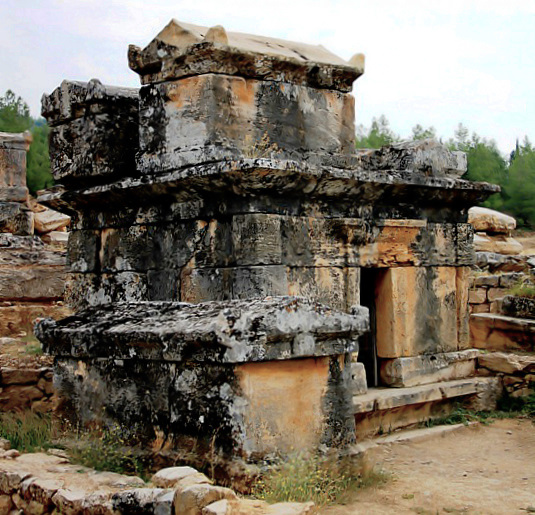
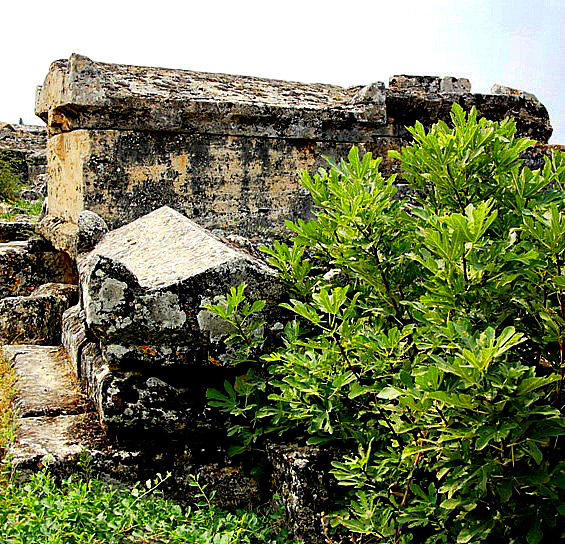
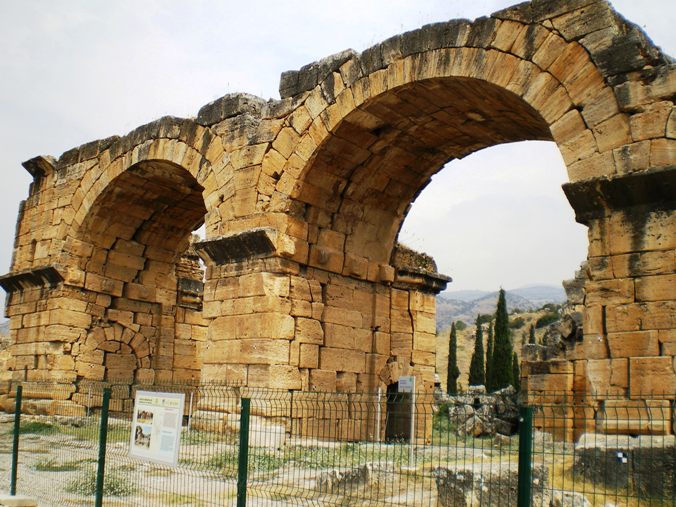
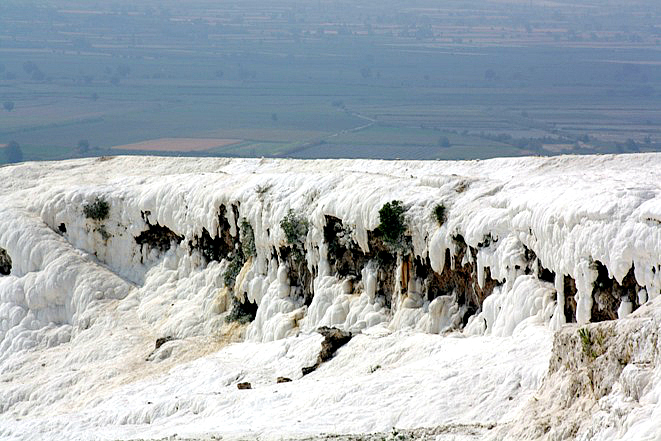
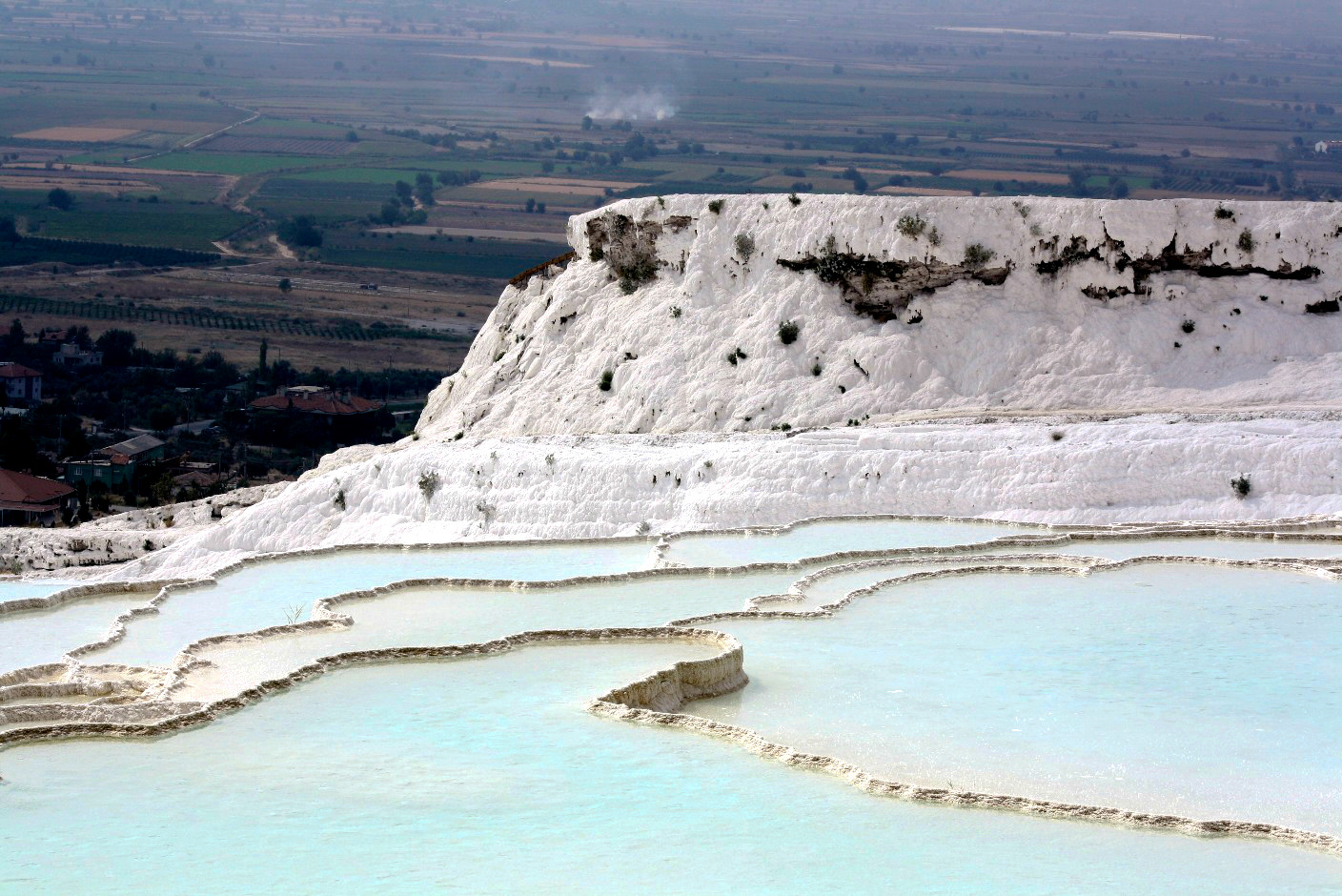
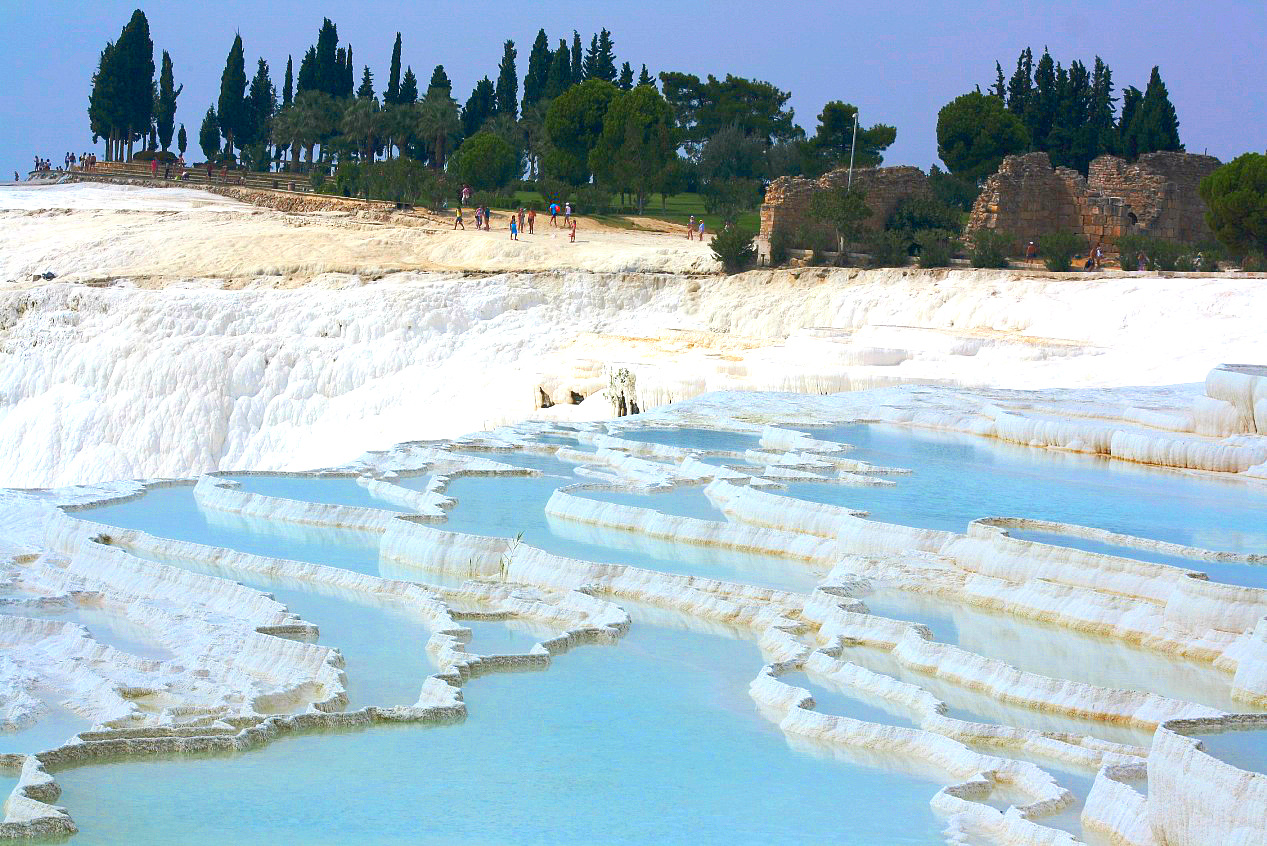
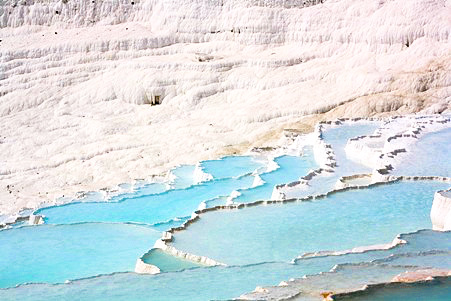
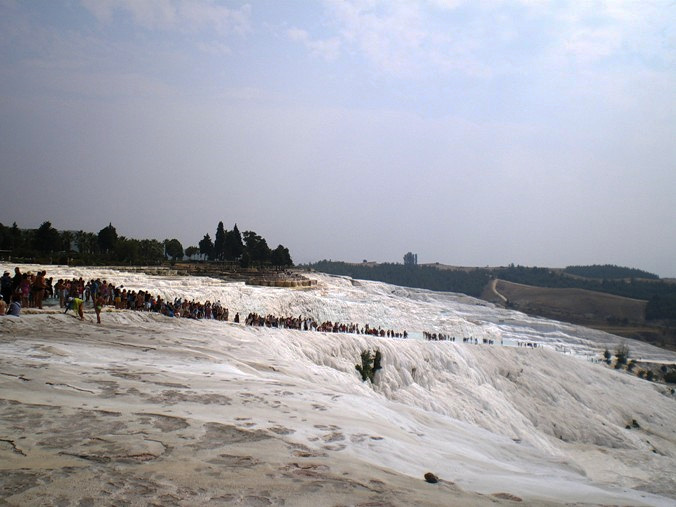
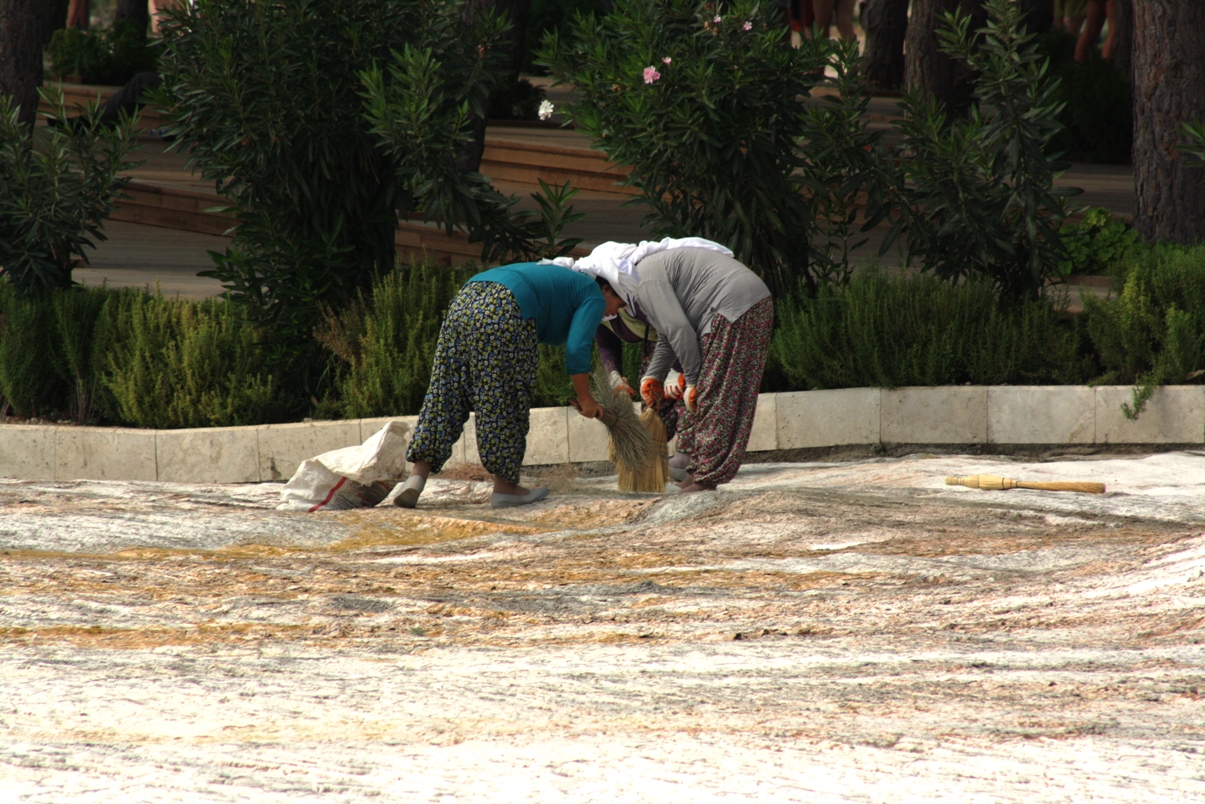
A propsperous port town that obviously thrives on the tourist trade. Large trawlers docked in the bay suggest its economy is more diversified than just tourism. Set in rolling desert hills it's got a feeling of space despite the bustle in the centre of town with souvenier shops and cafes crowded together. But, with a pleasant vibe. While the merchants are keen to get your cash there's no in-your-face hassle, and it was a lot quieter than I expect it can be. Cheap and frequent shuttle buses make it easy to get around. With Samos being only 2 km away across the bay, it is an easy access point to Greece. It's also the stop off for the cruise liner passengers to be bussed inland to Pammukale for day trips to the travertine terraces.
Terraces are made of travertine, a sedimentary rock deposited by water from hot springs. Calcium carbonate deposited by water eventually hardens into travertine. Can you believe they used to park the tourist buses on these formations? Access is now well controlled thankfully. Hieropolis ruins of baths, library and gymnasium are adjacent. The hot springs have been used as a spa since the 2nd century BC. The large necropolis is filled with the stone sarcophagi of those for whom a spa was insufficiently recuperative.
Interesting geologically because of its spectacular travertine terraces and intriguing historically through its ancient, sprawling necropolis and ruins. Disappointing in that its covered by fat, red, underclad eastern Europeans. But it's well worth the inland diversion from the coast.
The departure point to Rhodes by a short ferry ride. Turkey in microcosm? Set in a pretty landscape, crowded with tourists and hotels, a call to prayer broadcast from a nearby mosque drowned out by the boozy noise of a wet t-shirt competition.
If it wasn't for the ferry transfer to Rhodes this place could be given a miss and you wouldn't miss much. Perhaps the fringe areas are worthwhile. We'll never know.












One of the few negatives was the tourist multitudes from the fleets of giant cruise liners that ply the Mediteranean and Aegean. They pour out of those damned ships constantly in great numbers, haunt the waterfronts and are bussed inland to places like Ephesus and Pammukale. To be fair, there weren't that many at Ephesus. They aren't interested in history, only in where their next doughnut is coming from.
The suburbs of Istanbul (14 million people), the coast to Izmir and Izmir itself are overcrowded, cheek-by-jowl dystopian visions of an overpopulated planet.